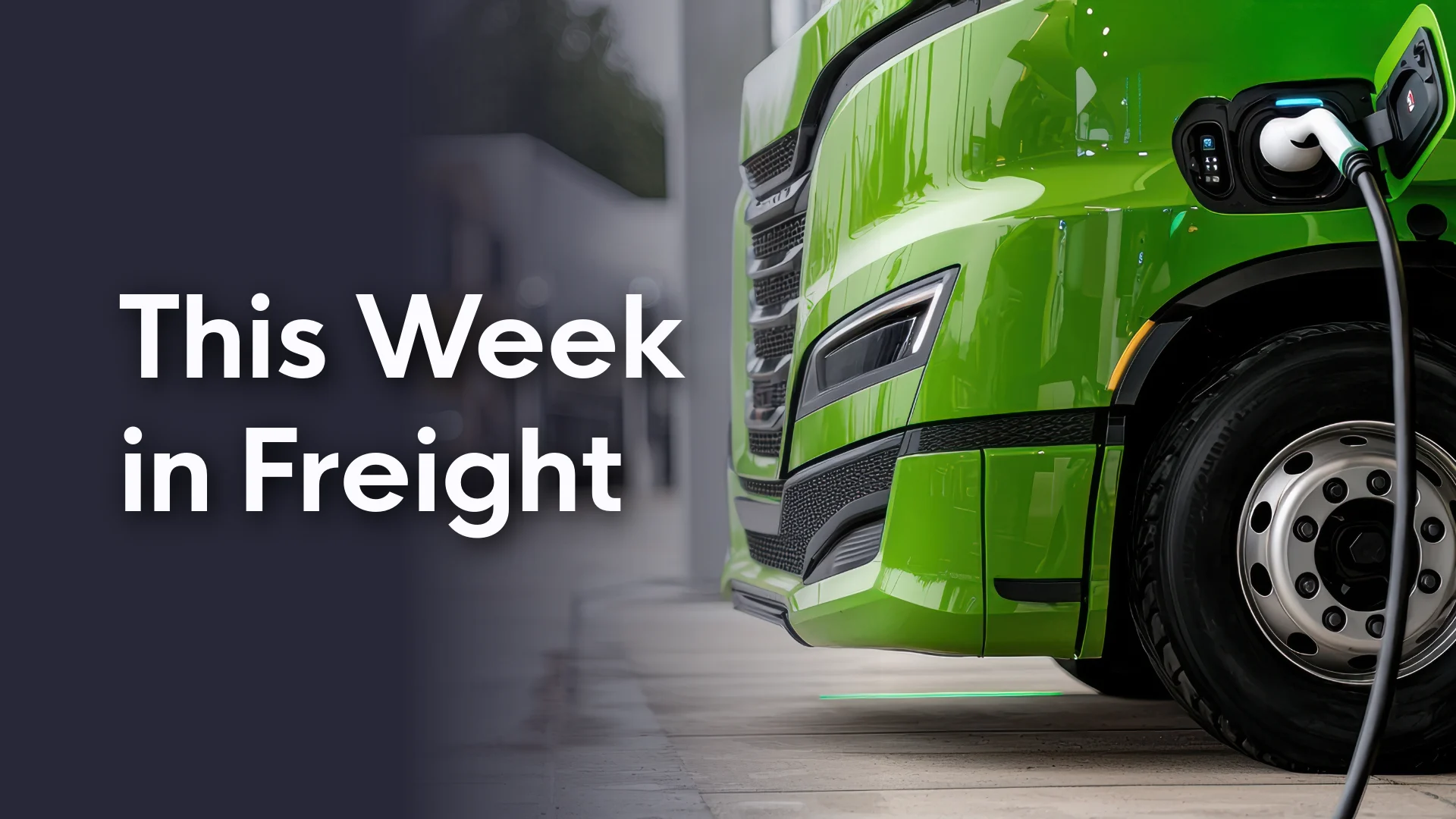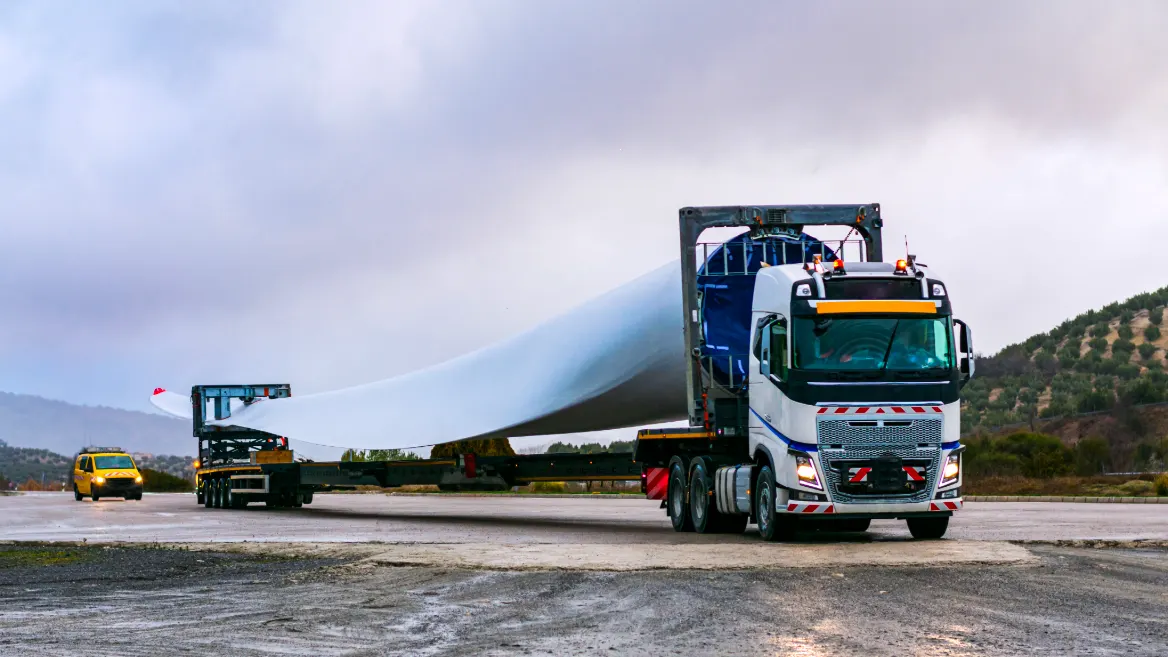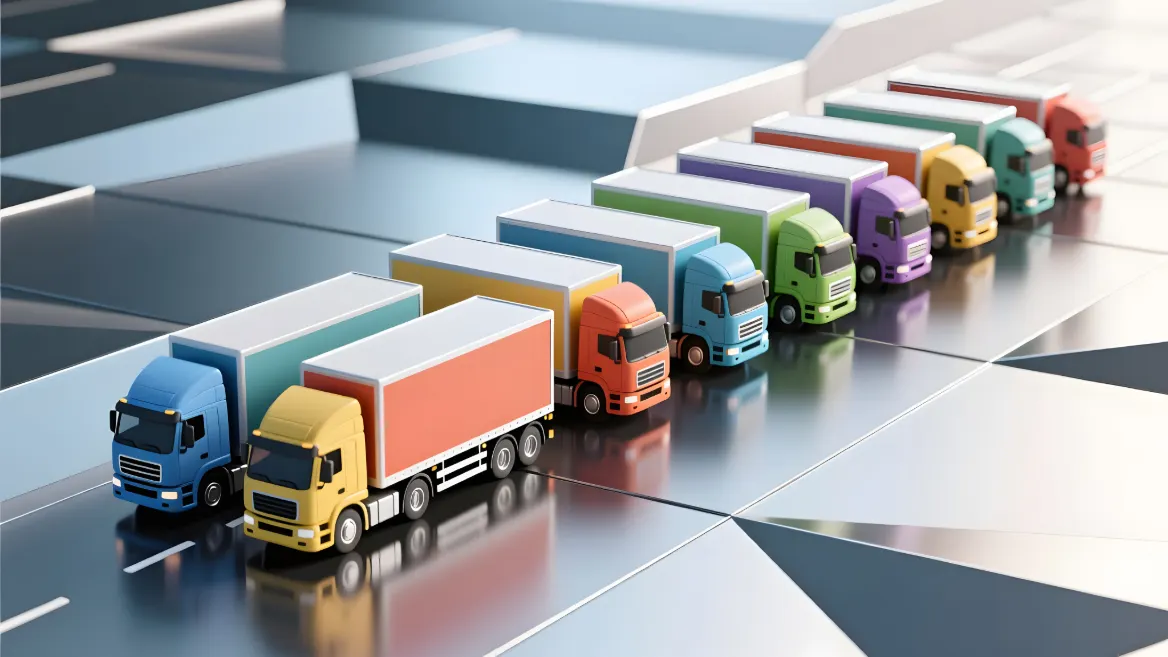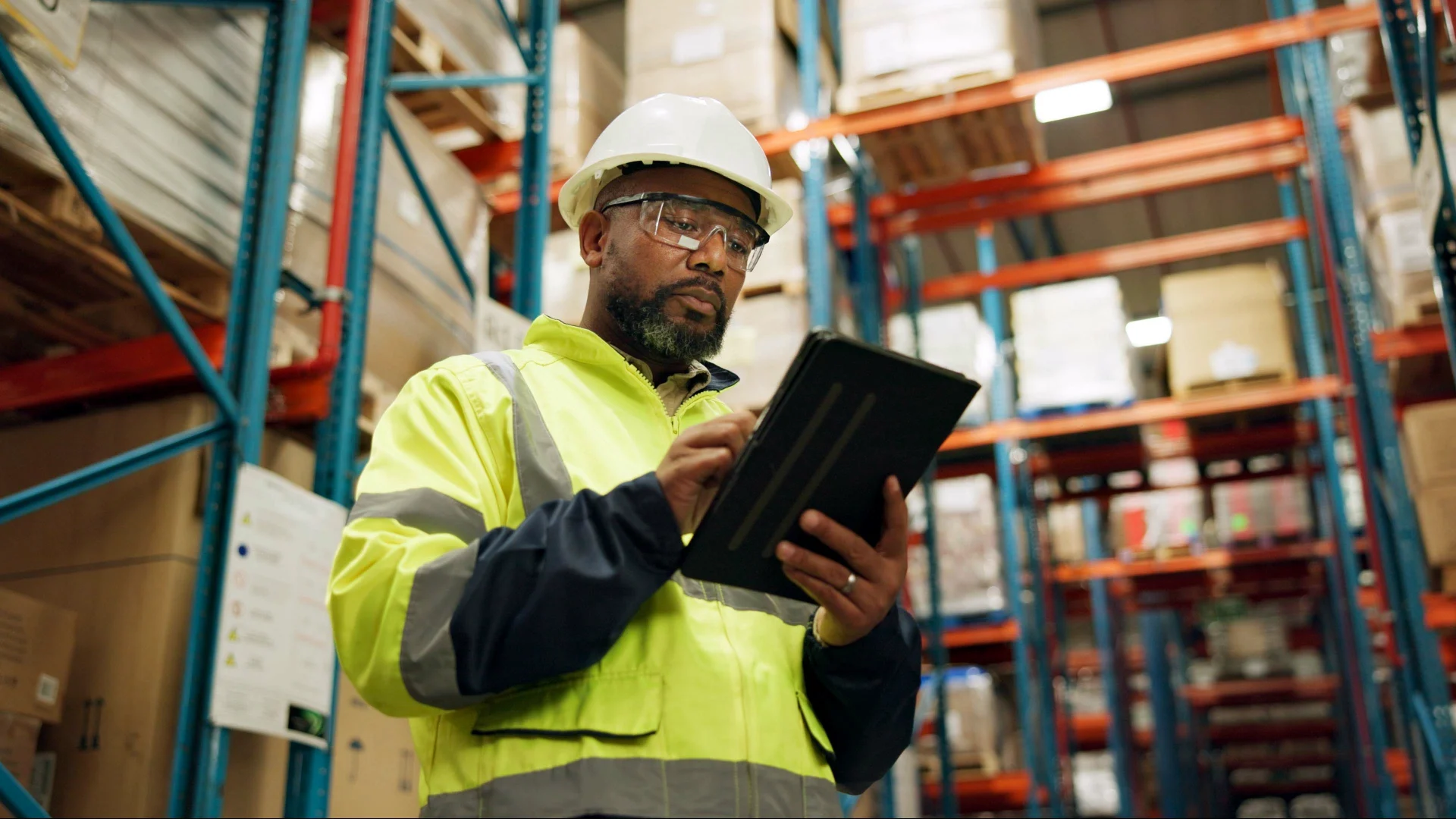Intermodal transportation is a logistics method where goods are moved using two or more modes of transport (like rail, road, or sea), without handling the cargo itself when switching between modes.
This is made possible through the use of standardised intermodal freight containers that remain sealed throughout the journey.
In this guide, we’ll break down how intermodal freight works, what makes it efficient, and where it’s most commonly used. You’ll learn about its benefits, practical applications, and the technologies that keep these systems running smoothly.
What we’ll cover
Fleets, bookings, subcontractors, compliance & payments.
With HX, you can manage them all in one place.
Intermodal vs multimodal explained
Intermodal transportation uses multiple modes of transport with a separate carrier (and contract) for each leg of the journey, allowing more flexibility at transfer points.
Multimodal transport also combines modes, but the entire shipment is handled by a single carrier under one contract.
Here is a comparison of the two concepts side by side:
| Feature | Intermodal transport | Multimodal transport |
|---|---|---|
| Contracts | Separate for each mode (allow tailored service levels) | Single contract for entire journey |
| Carrier responsibility | Multiple carriers selected per mode | One carrier manages whole shipment |
| Flexibility | Higher – choose best carrier per mode | Lower – depends on chosen provider |
| Tracking | Tracking can differ per leg | Single tracking platform across the journey |
If you’re managing complex shipments or working with multiple carriers, freight forwarders can help coordinate each leg of the journey.
Freight forwarding is the process of organising and managing the shipment of goods from one place to another, typically across borders. A freight forwarder acts as an intermediary between the shipper and various transport services, handling everything from bookings and paperwork to customs clearance and delivery.
Why intermodal transport is important
Intermodal transportation is growing in popularity thanks to its efficiency, cost-effectiveness, and sustainability.
Let’s look at these elements in more detail:
Long‑distance cost savings
Intermodal transport helps reduce costs by shifting long-haul segments to rail or sea, which are cheaper per mile than road freight. This is especially useful for businesses moving high volumes across regions or borders.
The China–Europe rail route is a great example, offering faster transit than sea and lower costs than air.
Many UK retailers also use rail from continental Europe to save on cross-border shipping expenses.
Less cargo handling and damage
Because goods stay inside one sealed container throughout the journey, there’s less need for manual handling at transfer points.
Intermodal containerization plays an important role here, allowing cargo to move between modes without unloading or repacking.
This is particularly valuable in sectors like automotive or pharmaceuticals, where fragile or high-value items need extra protection. Intermodal shipping helps maintain product integrity from manufacturer to end user
Lower environmental impact
Rail and barge emit much less CO₂ than trucks, making intermodal freight transport a cleaner alternative.
Many companies are adopting intermodal solutions to meet decarbonisation targets and improve sustainability reports.
For example, DPD and other e-commerce firms now combine electric delivery vans with rail freight for a low-emissions last-mile model. Green corridor projects across Europe are also prioritising intermodal infrastructure to meet climate goals.
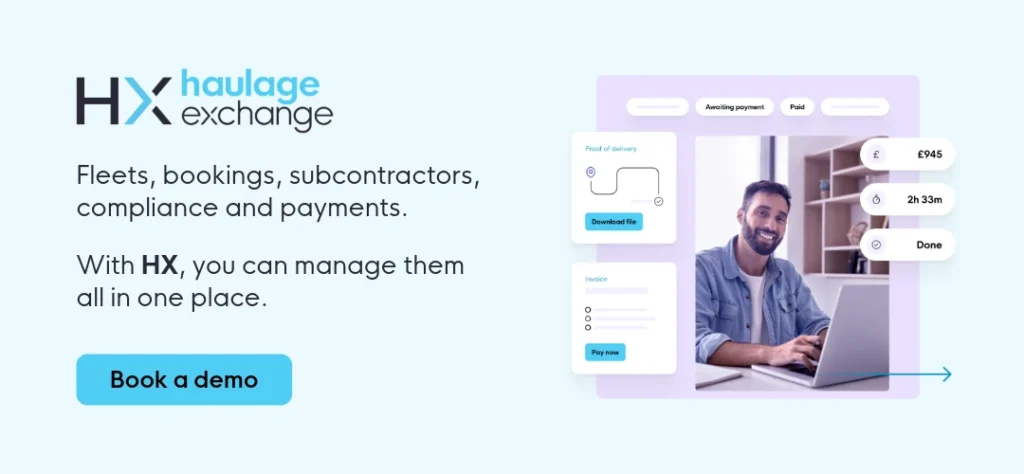
Pros and cons of intermodal transport
Intermodal transport offers a range of advantages but also comes with a few trade-offs. Understanding both sides can help you decide whether it’s the right fit for your shipping strategy.
Pros
- Lower long-distance costs: Intermodal transport reduces reliance on road haulage for long trips by shifting to cheaper modes like rail and ocean freight. For example, many UK businesses now route goods through European rail corridors to cut fuel costs.
- Reduced handling and damage: Cargo remains in one container throughout the journey, lowering the risk of breakage or theft. This is especially helpful for delicate goods like electronics or medical supplies.
- Environmental benefits: Trains and barges produce far fewer emissions than HGVs, making intermodal freight a cleaner option. Many companies choose it to support ESG goals or meet decarbonisation targets.
- Greater flexibility across regions: Intermodal systems allow businesses to mix and match the best transport methods for each route. For instance, a shipment from China might combine rail to Eastern Europe and trucks for final delivery in the UK.
Cons
- Slower transit times: Switching between modes can add delays, particularly if there are hold-ups at terminals or ports. Time-sensitive cargo may require alternative logistics strategies.
- Infrastructure dependency: Intermodal transport relies on having access to well-equipped rail terminals, ports, and loading equipment. In remote areas, this can limit feasibility or increase costs.
- Complex coordination: Multiple carriers and schedules make planning more complicated than a single truckload journey. Without good tracking systems, it’s harder to manage disruptions or changes en route.
- Upfront investment: Shippers may need to invest in intermodal-compatible equipment or work with freight forwarders who specialise in these systems. In some cases, this can be a barrier for smaller companies just starting out.
The most common mode combinations
Different transport modes are paired based on cargo type, distance, and available infrastructure.
Below are some of the most common intermodal combinations used in both domestic and international freight.
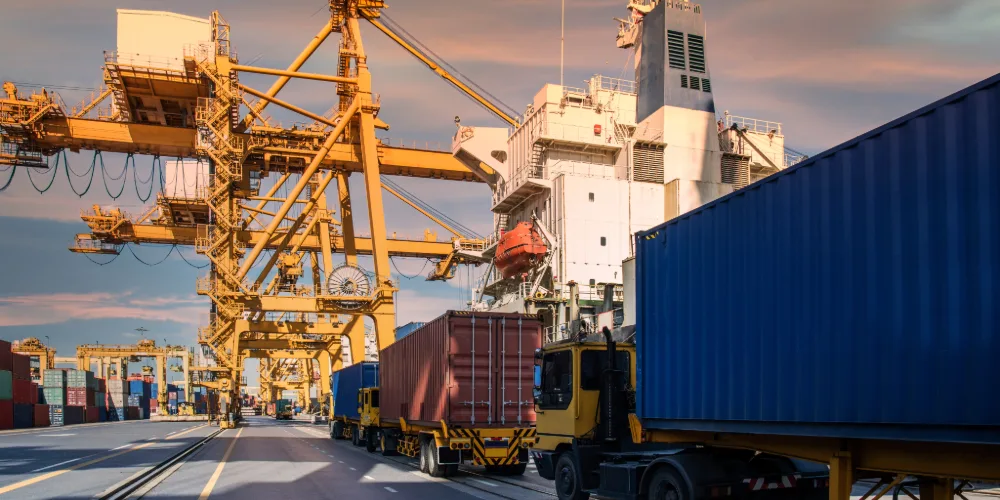
Ocean + Truck
Goods arrive at major ports via ocean freight and are then transported inland by road to warehouses or retail hubs.
This is the most common setup for international trade, especially for UK imports coming through ports like Felixstowe or Southampton.
Ocean + Rail
Shipments are moved from port to inland locations using rail instead of road, offering lower emissions and bulk capacity.
The China–Europe rail link is a good example, combining ocean freight to Russian ports with rail to central Europe.
Rail + Truck
Trucks handle the first or final mile, while rail covers the long-distance leg to reduce fuel use and congestion.
Many UK e-commerce retailers use this combo for cross-border shipments from Europe with local delivery by HGV.
Ocean + Barge
After arriving by sea, containers are transferred onto inland barges that move along rivers or canals.
This is common in Europe along the Rhine and Scheldt rivers, supporting low-emission cargo flow into landlocked regions.
Truck + Barge
Barges connect to road transport at smaller river ports, offering a quiet and efficient alternative to full road journeys.
In the Netherlands and Belgium, barge-to-truck setups are used to deliver goods into dense city centres without clogging roads while also avoiding congestion charges.
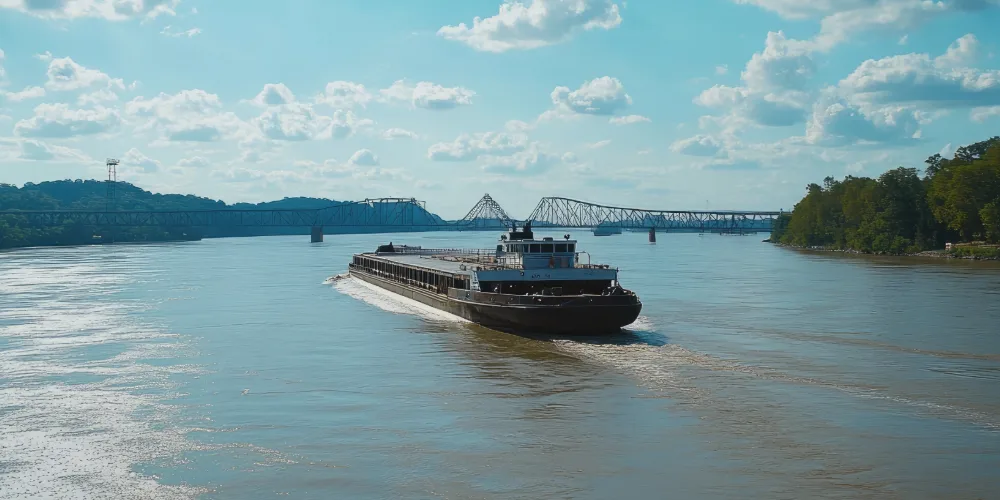
How intermodal containerisation works
At the heart of intermodal transport is intermodal containerisation: the system of using standardised containers that can easily switch between trucks, trains, ships, and barges.
This approach allows freight to move globally with minimal handling and maximum efficiency.
Common container types and sizes
Most intermodal freight containers fall into standard sizes like 20-foot (TEU) and 40-foot (FEU), which are used for everything from furniture to electronics. Other types include:
- High-cube containers
- Refrigerated (reefer) units for cold chain logistics
- Flat racks for heavy machinery
- Tank containers for liquids or chemicals.
These containers are built to handle stacking, lifting, and long-distance travel across multiple modes.
Their durability and versatility make intermodal containerisation a reliable solution for many different industries.
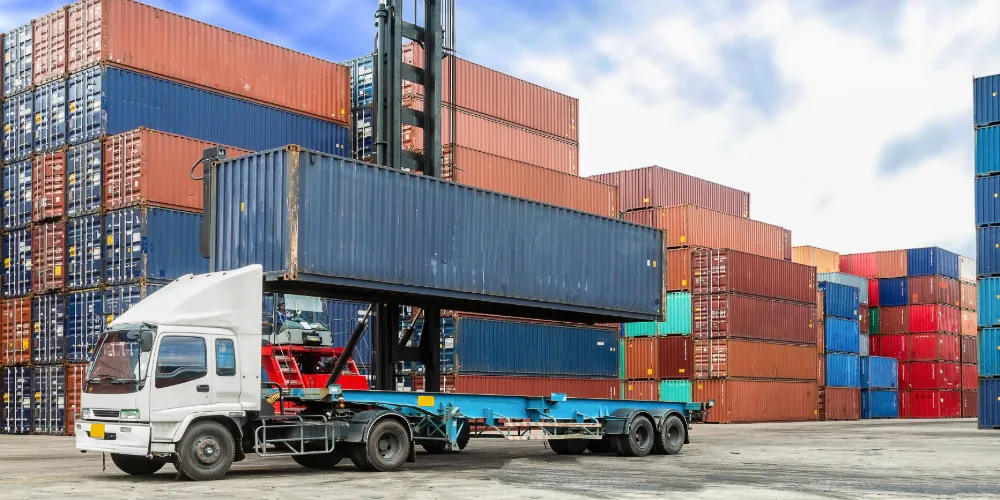
International ISO container standards
All intermodal containers follow ISO (International Organization for Standardization) guidelines that guarantee global compatibility. These standards cover important details like:
- Container size
- Corner fittings
- Load limits
- Construction quality
Thanks to these shared specifications, a container loaded in Shanghai can move seamlessly by ship, rail, and road to the Midlands by a Birmingham haulage company without ever being opened.
This is what makes intermodal freight transport both scalable and secure.
Managing intermodal freight operations
Running a successful intermodal setup involves more than just choosing the right modes. The process usually involves both a freight broker and a freight forwarder.
The difference between freight brokers and freight forwarders lies in their role: brokers connect shippers with carriers for single shipments, while forwarders handle the full logistics chain, including documentation, customs, and coordination across multiple modes.
Timing, cargo type, and infrastructure all play a role in how smoothly your freight moves across the supply chain process.
Transit time and cost considerations
Intermodal freight often takes longer than direct trucking due to transfer points and scheduling. However, cost savings from using rail or sea legs often outweigh the extra time, especially for non-urgent shipments.
Businesses must weigh the trade-off between delivery speed and budget, depending on customer expectations and inventory cycles.
Some retailers compromise by using intermodal transport for restocking but reserve air or road for high-speed fulfilment.
Cargo characteristics and infrastructure
Certain goods (like bulk materials, durable goods, or packaged consumer items), are well suited to intermodal containerization. Fragile, high-value, or time-sensitive cargo may require more direct handling and specialist routing.
Success also depends on having access to terminals, cranes, storage yards, and reliable mode connectors. For international shipments, infrastructure must also support efficient customs clearance to avoid costly delays at borders.
Key documentation required
Intermodal transport crosses multiple borders and carriers, which means accurate paperwork is necessary at every stage.
The documents required can vary by region and cargo type, but most shipments will need the following:
- Bill of Lading (BOL): Acts as a receipt and contract between shipper and carrier. Not to be confused with waybills.
- Commercial invoice: Details the goods, their value, and the terms of sale.
- Packing list: Describes the cargo contents and packaging format for inspection purposes.
- Customs declaration: Required when crossing borders to verify goods for duties and restrictions.
- Import/export licences: Mandatory for controlled goods or shipments to regulated countries.
- Certificates of Origin: Proves where goods were manufactured, often used for trade agreements.
- Insurance certificate: Confirms the shipment is covered against loss or damage.
- Documents related to import tax and customs duties: Guarantees compliance with local tax rules and tariff structures.
Technology in intermodal logistics
Digital tools are transforming how intermodal freight is tracked, managed, and delivered. From smart ports to blockchain, technology is making the system faster, greener, and more reliable.
Smart port and port digitalisation
Smart ports use digital scheduling, sensors, and automation to manage container traffic and reduce dwell times.
This improves cargo flow, lowers emissions, and reduces idle time for ships and trucks.
Ports like Rotterdam and Hamburg are early adopters, offering real-time berth planning and container visibility. These upgrades are especially useful in managing peak periods and reducing port congestion.
Automation and autonomous systems
Automated cranes, vehicles, and robotic sorting systems help terminals move cargo more efficiently. This cuts labour costs and minimises delays caused by manual handling.
Some intermodal hubs use driverless trucks and rail shuttles within terminal grounds to keep operations running 24/7. These systems also reduce errors and speed up container transfer between modes.
Container tracking
Modern tracking systems use GPS, RFID, and IoT sensors to give real-time updates on container location and condition. This helps businesses manage delays and protect sensitive cargo.
High-value or temperature-sensitive shipments, like pharmaceuticals or electronics, benefit from constant monitoring. Customers also gain peace of mind through accurate delivery updates.
Blockchain and data security
Blockchain creates a secure, shared record of a shipment’s journey, reducing fraud and disputes. It can also automate transactions or alerts using smart contracts.
For intermodal freight, blockchain helps make customs clearance and cargo handoffs smoother. It’s especially useful in cross-border operations involving multiple carriers and jurisdictions.
Intermodal transportation FAQs
What is the difference between multimodal and intermodal?
Intermodal transportation uses multiple carriers, each responsible for a different leg of the journey, with separate contracts. Multimodal transport uses one provider and one contract to handle the entire shipment, even if it changes modes along the way.
What is the most common intermodal transportation?
The ocean–truck combination is the most widely used, especially for international freight. Goods arrive by ship and are delivered inland by HGV to warehouses or distribution centres.
Who is the largest intermodal carrier?
J.B. Hunt is one of the largest intermodal carriers in the United States. Globally, companies like Maersk and CMA CGM lead by integrating ocean, rail, and road logistics.
When is intermodal cheaper than truck loads?
Intermodal is usually more cost-effective for shipments travelling long distances where rail or sea can replace expensive road freight. It’s also cheaper when shipping large volumes that don’t need urgent delivery.
How does intermodal reduce emissions?
Switching from trucks to rail or barge for long-haul legs notably cuts CO₂ output. Many intermodal freight transport setups now support decarbonisation goals and greener supply chains.
What equipment is needed for intermodal shipping?
You’ll need intermodal freight containers, chassis for road legs, and terminal equipment like cranes or reach stackers. Some shipments may also require tracking devices or temperature control depending on the cargo.

